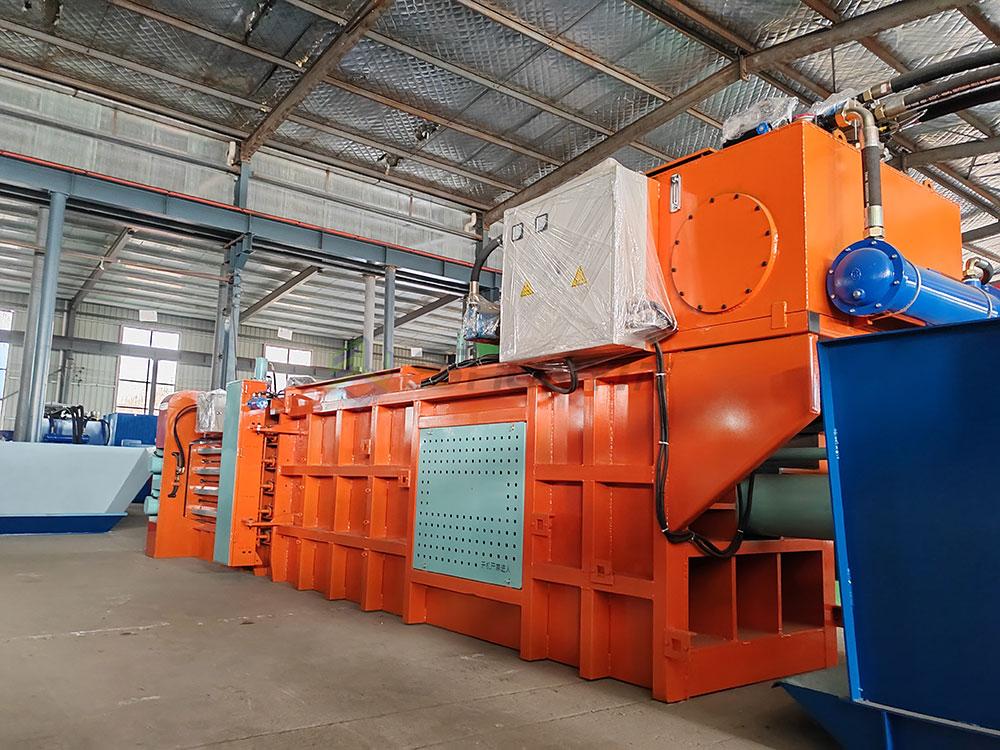
Facing continuous production demands and ever-growing waste streams can feel overwhelming. You want to keep your operations running smoothly, but mechanical breakdowns can halt everything in an instant.
Maintaining a horizontal hydraulic baler involves routine checks, timely servicing, and adherence to best practices. Proper care extends its lifespan, optimizes performance, and reduces downtime, making waste management more efficient.
Keeping your horizontal baler in top shape will save you money, reduce stress, and help you meet production goals.
How to maintain balers?
Balers take on the heavy lifting in waste management, yet they can show signs of wear without proper attention. You can avoid major breakdowns through consistent care.
Regular maintenance of a horizontal hydraulic baler1 includes cleaning, lubricating, and inspecting critical components. These steps help prevent unexpected failures and keep your operations running smoothly.

-
Daily Cleaning
- Remove debris and leftover materials from the baler chamber.
- Wipe down accessible surfaces to reduce buildup.
- Ensure any safety sensors are not blocked.
-
Weekly Lubrication
- Apply the recommended lubricants to moving parts.
- Check hydraulic oil levels for optimal pressure.
- Tighten loose bolts and chains to prevent vibration issues.
| Maintenance Task | Frequency | Benefit |
|---|---|---|
| Clean Baler Chamber | Daily | Prevents clogs and buildup |
| Lubricate Joints | Weekly | Reduces friction and wear |
| Check Hydraulic Fluid | Weekly | Ensures stable compression power |
Sticking to these basics not only safeguards your horizontal hydraulic baler1 but also preserves its operational efficiency.
What is the life of a baler?
A baler’s lifespan hinges on usage, operating environment, and how diligently it’s maintained. Caring for it means longevity and fewer repairs.
A well-maintained horizontal baler can last 10 to 20 years or more, depending on workload and consistent servicing. Neglect can shorten its life, leading to expensive breakdowns.

Usage Volume
- Continuous heavy use leads to faster wear.
- Light or moderate use extends operational years.
Preventive Care
- Routine checkups catch minor issues early.
- Ignoring small problems accelerates overall wear.
Environmental Conditions
- High humidity or dusty settings can corrode parts.
- Temperature extremes strain hydraulic systems.
| Factor | Impact on Lifespan | Advice |
|---|---|---|
| High Workload | Faster wear on components | Increase maintenance frequency |
| Regular Servicing | Minimizes major breakdowns | Follow a planned schedule |
| Environmental Stress | Leads to corrosion or dust buildup | Keep the area clean and dry |
With mindful care, your horizontal hydraulic baler remains productive for many years, delivering consistent results.
How often should a baler be serviced?
Servicing schedules vary, but regular intervals help avoid performance dips. Frequent checks bring peace of mind and stable operations.
A horizontal baler should be serviced every three to six months, depending on workload. High-volume facilities often require monthly inspections to catch issues early.

-
Monthly Checkpoints
- Test hydraulic and electrical systems.
- Ensure bale ejection mechanisms function properly.
-
Quarterly Appraisals
- Inspect cylinders and seals for leaks.
- Calibrate any automated sensors or safety features.
| Service Interval | Task | Benefit |
|---|---|---|
| Monthly Inspection | Check oil levels, sensors, and hoses | Prevents unforeseen breakdowns |
| Quarterly Tune-up | Inspect cylinders, seals, and gears | Extends operational lifespan |
| Biannual Overhaul | Comprehensive cleaning and calibration | Ensures optimal performance |
Staying consistent with these intervals saves money long-term and keeps your horizontal baler reliable.
How does a horizontal baler work?
Understanding the basics of operation can help you spot problems sooner and keep things running smoothly. Knowledge is power when it comes to maintenance.
A horizontal baler compacts recyclable materials by feeding them into a chamber, applying hydraulic pressure, and then automatically tying the compressed bale. This process maximizes space and reduces labor costs.

-
Loading
- Conveyor or manual feed delivers materials into the chamber.
- Sensors may detect fill levels for automated control.
-
Compression
- Hydraulic cylinders apply powerful force.
- The material is compacted into a uniform bale.
-
Tying & Ejection
- Automatic or semi-automatic tying secures the bale.
- Finished bales are pushed or rolled out for storage or transport.
| Step | Description | Outcome |
|---|---|---|
| Material Feed | Loads recyclables into the chamber | Sets the stage for compression |
| Compression | Hydraulic power compacts waste into dense bales | Saves storage and transport space |
| Bale Securing | Auto or manual tying for stability | Ensures easy handling and stacking |
| Ejection | Bale is released and readied for storage | Streamlines workflow |
A thorough grasp of how a horizontal baler works empowers you to maintain it effectively, ensuring consistent waste management success.
Conclusion
Prolonging the life of your horizontal hydraulic baler1 hinges on regular maintenance, timely servicing, and proper operation. By sticking to a structured schedule and understanding the machine’s workings, you’ll not only maximize efficiency but also save on long-term costs. A well-cared-for baler keeps your waste management smooth and hassle-free for years to come.








